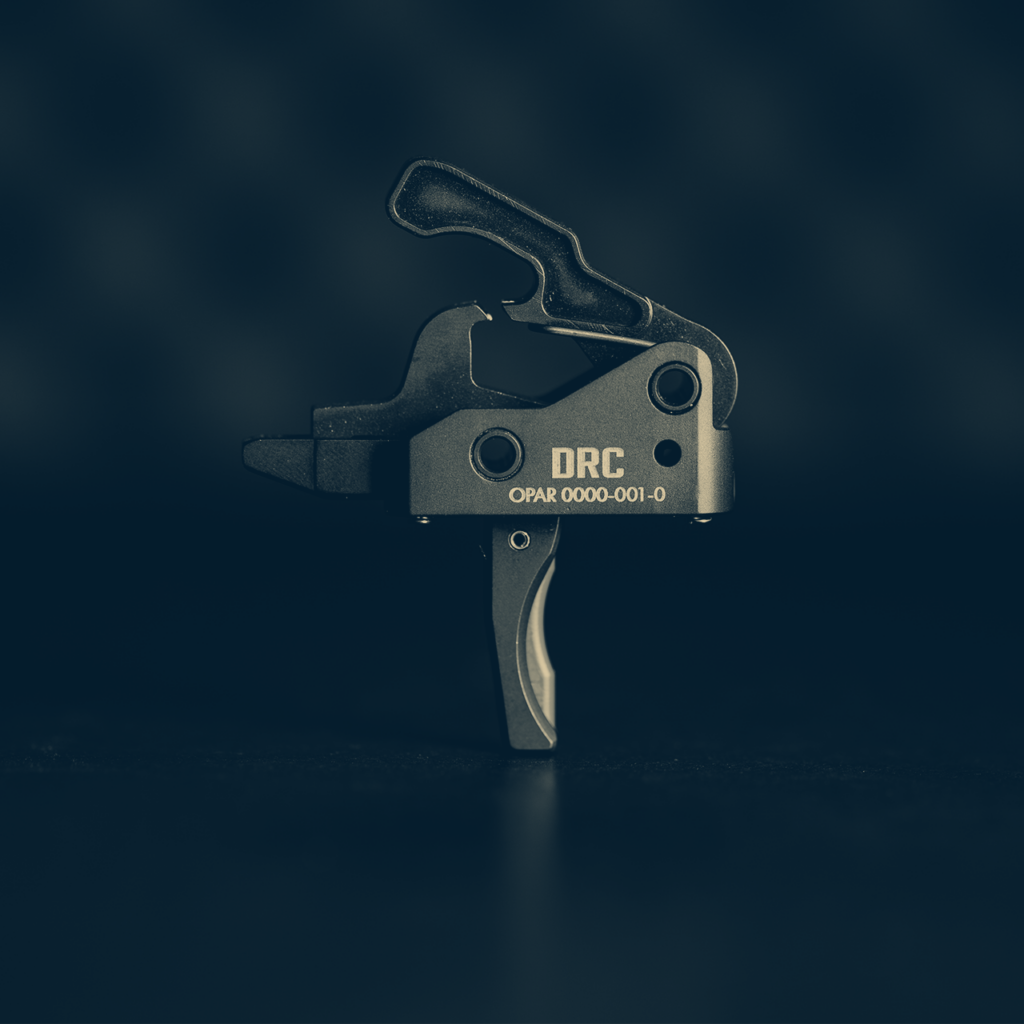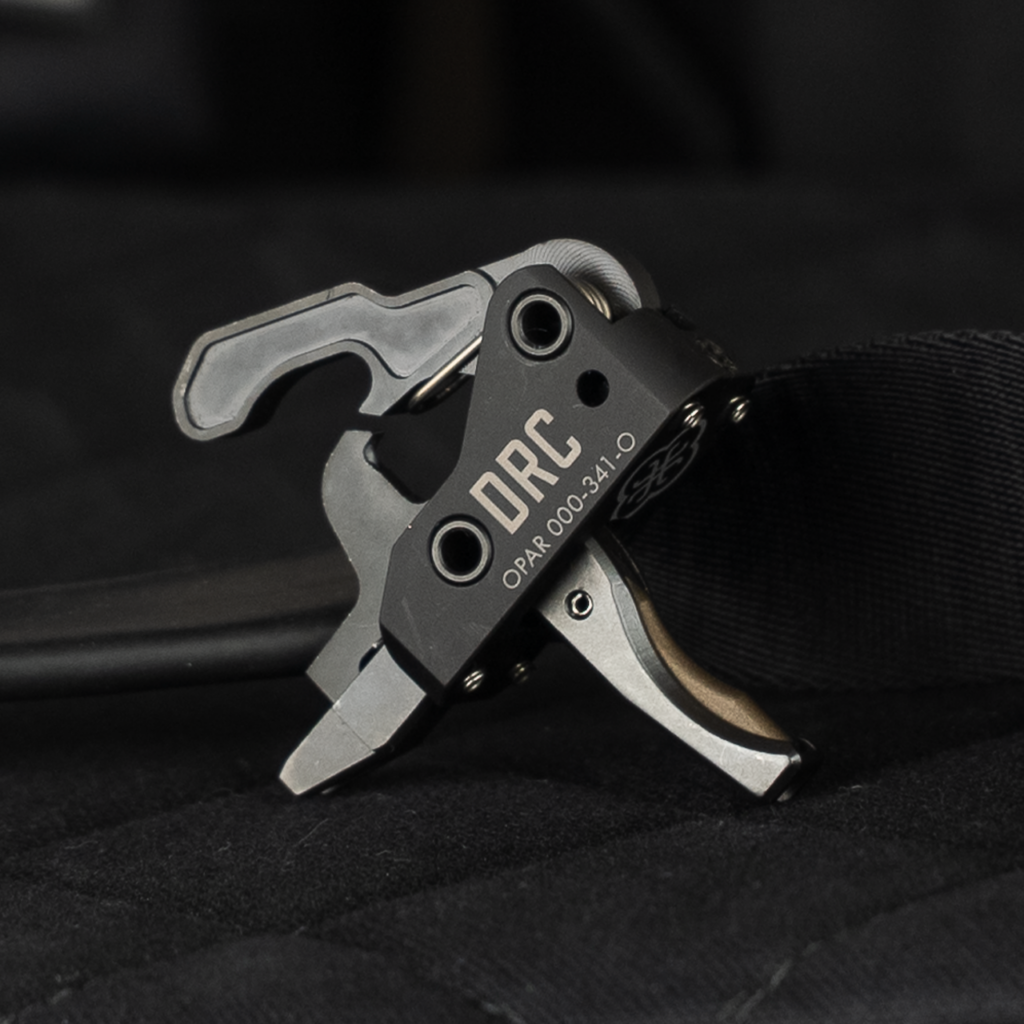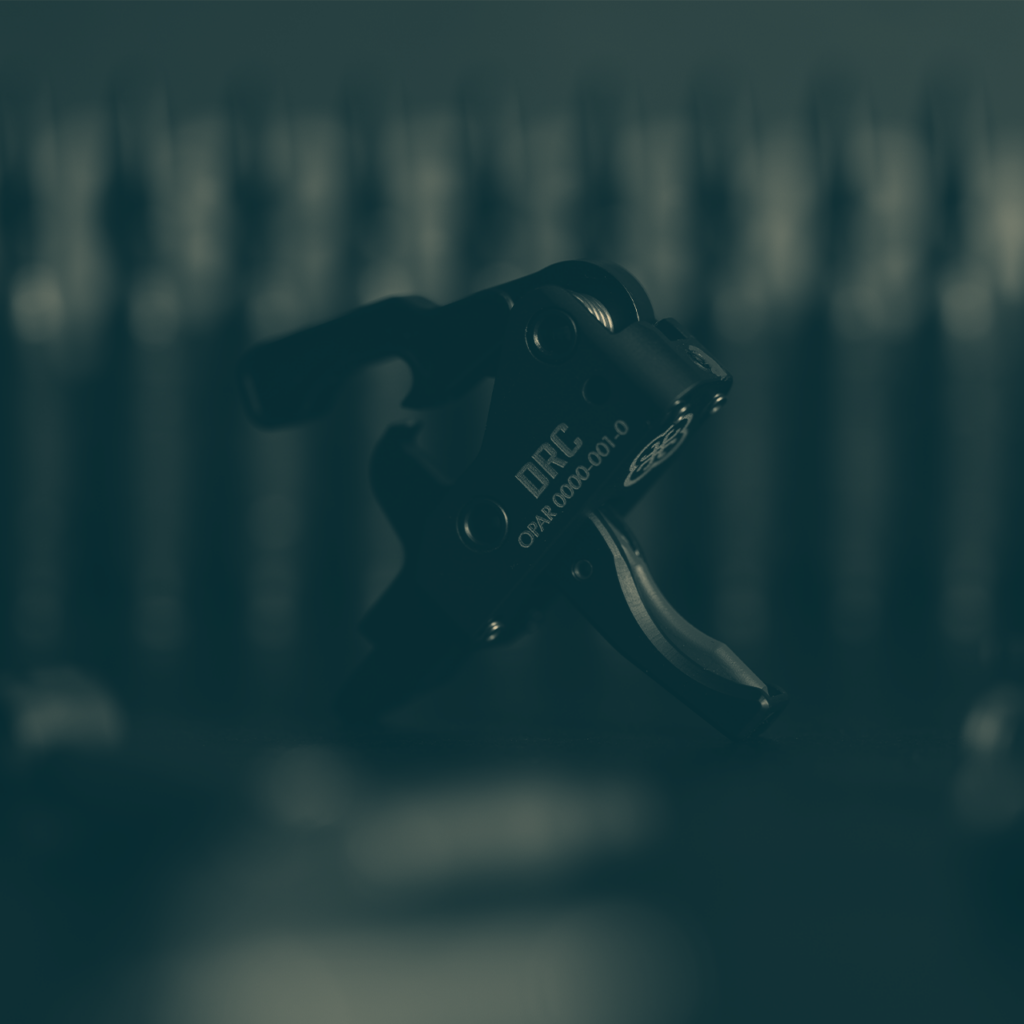

NOTE: THESE TRIGGER SYSTEMS ARE IN NO WAY MEANT TO BE THE FIREARM’S PRIMARY SAFETY. The OPAR triggers are only intended to serve as a back-up ‘last line of defense’ against ADs in the event the safety is not on when it should be.
A Pre-Stage trigger requires two separate actions that must be completed in the proper sequence for the trigger to trip the sear. Intentionally named “Pre-Stage” in order to differentiate it from the traditional Single or Two-Stage triggers. The OPAR Pre-Stage trigger is designed to help reduce the likelihood of accidental discharges.
Dillon Rifle Company’s Pre-Stage drop-in trigger has a secondary trigger inset in the primary trigger shoe. This secondary trigger moves a trigger block that prevents the sear from disengaging. In order for the trigger to function, the inset trigger must first be depressed or the primary trigger will lock, resisting firing. From the shooters perspective it’s a normal trigger pull. Apply pressure to the trigger as you normally would and you will never know it’s there.
A second feature is the unique shape of the trigger. This is what we refer to as the “Area of Engagement”. The main trigger is designed to shroud the secondary trigger in a precise area. This helps prevent a foreign object like a strap or piece of kit from applying pressure to the trigger in the proper sequence and accidentally firing the weapon.
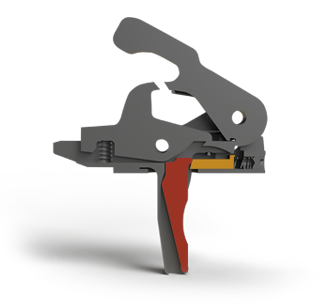
This is the resting position of the fire-control. The trigger stop remains under the trigger and is held in place by the secondary trigger and stop spring. This prevents the trigger from being pulled until the secondary trigger is depressed.
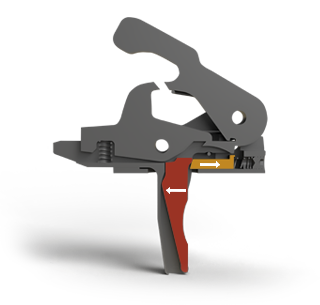
This is the staged position of the fire-control. The secondary trigger has been depressed without depressing the primary trigger. The secondary trigger causes the trigger stop to move toward the muzzle and allows the trigger to be pulled.
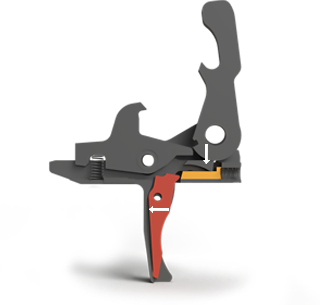
This is the fired position of the fire-control. The secondary trigger has remained depressed and the primary trigger has been pulled, releasing the hammer to strike the firing pin.

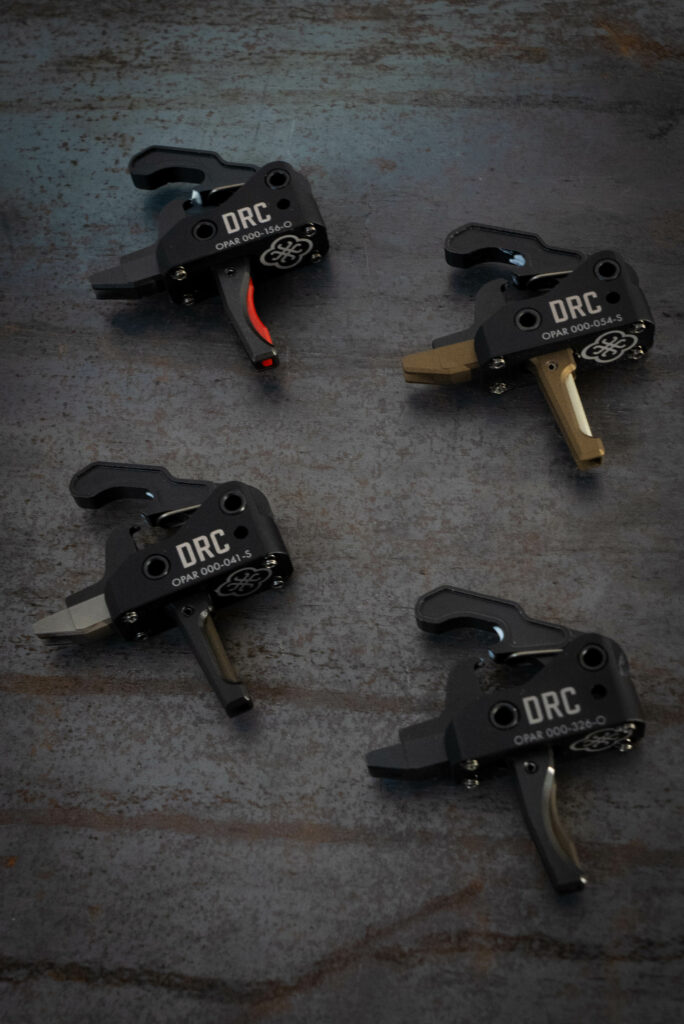
1.) Area of Engagement (A. O. E.)
A. O. E. describes the area within which, if a sufficient rearward force is applied, the trigger will function. On a standard Mil-Spec trigger the A. O. E. is 180 °. The OPAR- Curved has a A. O. E. of 100 °. (*Refer to A. O. E. diagram below)
2.) Internal Lock Mechanism (Patent No. 11274894)
An independent mechanism to the trigger & hammer that provides the safety features OPAR provides while maintaining reliability, durability, repeatability, and still have a simple drop-in installation process.
3.) Inset Secondary Trigger
The inset or secondary trigger must be depressed before the primary trigger. Assists in building muscle memory for trigger finger placement in simple and natural way.
There are, currently, 4 types of Pre-Stage Drop–In triggers:
The OPAR Operator-Curved trigger has a curved trigger shoe naturally assisting the user to locate their trigger finger to find the valley of the curve as well as assisting in muscle memory exercises for repeated and consistent placement. This curvature insures that even if, in the heat of battle, you pull the trigger incorrectly you will still be able to fire. You will just have to really mean it. The trigger will not fire if only the primary trigger is pulled.
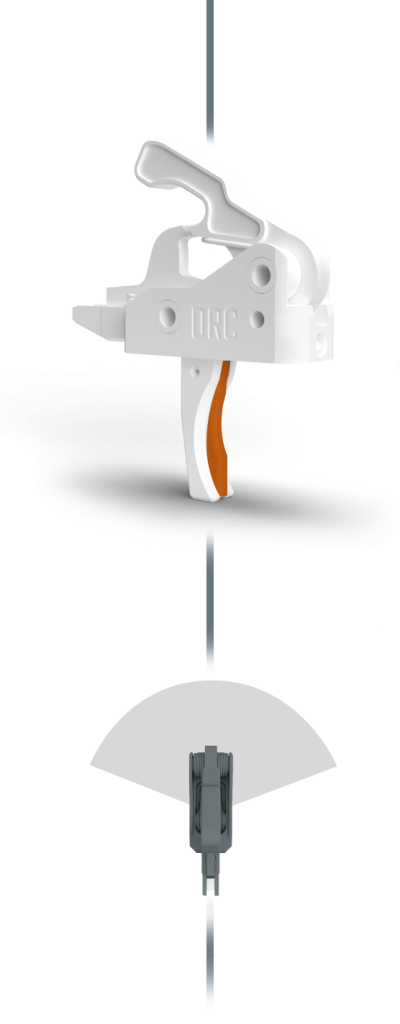
The OPAR Operator-Straight trigger has the same functional protection as the OPAR Operator-Curved, however the straight trigger provides increased coverage of the secondary trigger. This improves discipline for the operator to develop proper muscle memory in order to have repeated & precise trigger finger placement. The straight profile also enables the user to vary their trigger pull weight based on the position of their trigger finger on the secondary trigger.
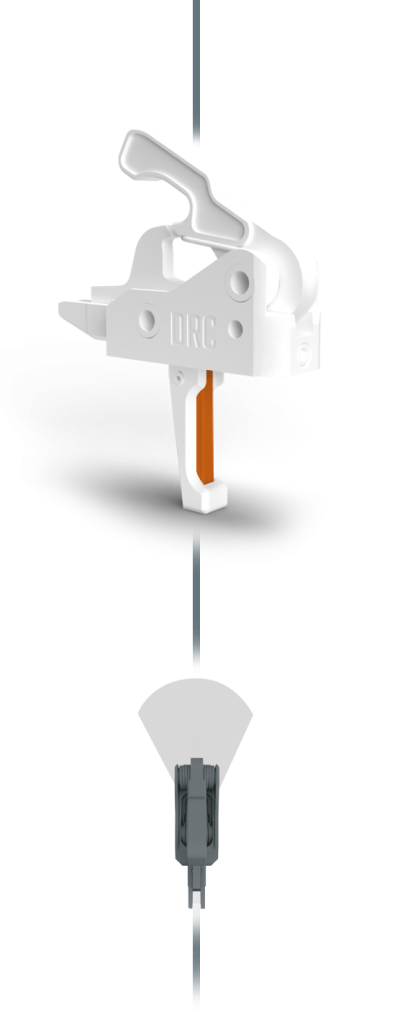
The difference between the two triggers is the amount of the inset trigger that is exposed. Less exposure-OPAR Straight means better protection from foreign objects in the trigger well. More exposure-OPAR Curved reduces foreign object protection but allows for more aggressive trigger action.
